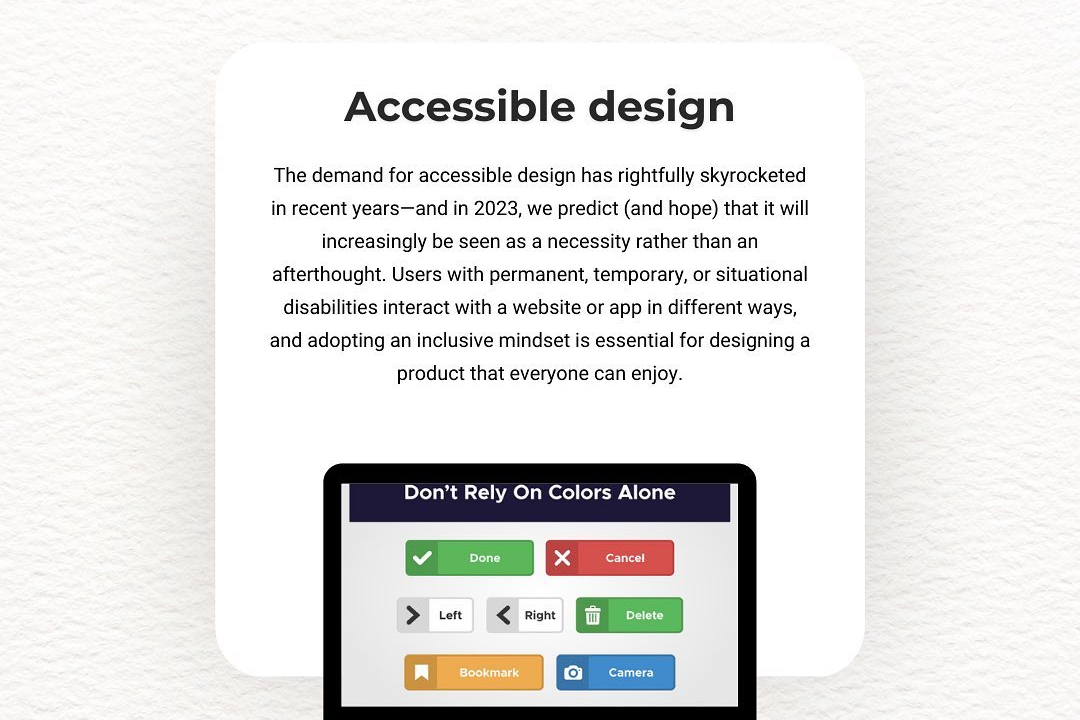Example Program for Associative Array in PHP
An example program for associative arrays in PHP showcases how to create and manipulate arrays that
Example Program for Associative Array in PHP
An example program for associative arrays in PHP demonstrates how to efficiently store and manage related data using key-value pairs, making code more readable and easier to maintain. Associative arrays are particularly useful when working with data that naturally pairs items together, such as user profiles, product details, or configuration settings. By utilizing meaningful keys, developers can retrieve, update, and manipulate specific data points effortlessly, which simplifies complex data handling and enhances the overall organization of the code.
To Download Our Brochure: https://www.justacademy.co/download-brochure-for-free
Message us for more information: +91 9987184296
An example program for associative arrays in PHP demonstrates how to efficiently store and manage related data using key value pairs, making code more readable and easier to maintain. Associative arrays are particularly useful when working with data that naturally pairs items together, such as user profiles, product details, or configuration settings. By utilizing meaningful keys, developers can retrieve, update, and manipulate specific data points effortlessly, which simplifies complex data handling and enhances the overall organization of the code.
Course Overview
The ‘Example Program for Associative Array in PHP’ course introduces learners to the fundamental concepts of associative arrays, enabling efficient data organization and retrieval. Through practical examples and real-time projects, participants will learn how to create, manipulate, and utilize associative arrays to simplify complex data management in PHP, enhancing their programming skills for real-world applications.
Course Description
Learn the basics of associative arrays in PHP with practical examples and real-time projects, enabling efficient data organization and retrieval for web development.
Key Features
1 - Comprehensive Tool Coverage: Provides hands-on training with a range of industry-standard testing tools, including Selenium, JIRA, LoadRunner, and TestRail.
2) Practical Exercises: Features real-world exercises and case studies to apply tools in various testing scenarios.
3) Interactive Learning: Includes interactive sessions with industry experts for personalized feedback and guidance.
4) Detailed Tutorials: Offers extensive tutorials and documentation on tool functionalities and best practices.
5) Advanced Techniques: Covers both fundamental and advanced techniques for using testing tools effectively.
6) Data Visualization: Integrates tools for visualizing test metrics and results, enhancing data interpretation and decision-making.
7) Tool Integration: Teaches how to integrate testing tools into the software development lifecycle for streamlined workflows.
8) Project-Based Learning: Focuses on project-based learning to build practical skills and create a portfolio of completed tasks.
9) Career Support: Provides resources and support for applying learned skills to real-world job scenarios, including resume building and interview preparation.
10) Up-to-Date Content: Ensures that course materials reflect the latest industry standards and tool updates.
Benefits of taking our course
Functional Tools
1 - PHP Development Environment: Students are introduced to setting up a PHP development environment using tools like XAMPP, WAMP, or MAMP. These environments provide an all in one solution with a web server (Apache), PHP compiler, and database support, enabling students to run and test PHP scripts locally. Proper setup ensures smooth development, debugging, and educational experience. Students learn to configure PHP and server settings, manage project folders, and troubleshoot common environment issues, laying a strong foundation for hands on coding.
2) Code Editors and IDEs: A variety of code editors such as Visual Studio Code, Sublime Text, or PHPStorm are explored for writing and managing PHP code efficiently. These tools offer syntax highlighting, code completion, debugging support, and version control integration, which significantly enhance productivity. Students learn best practices for organizing code, utilizing extensions, and customizing their workspace for optimal development flow to create clean, error free PHP scripts, including associative array programs.
3) PHP Interactive Shell (CLI): The command line interface (CLI) tools for PHP provide an interactive environment where students can run PHP commands directly. This allows them to experiment with associative arrays, test snippets, and quickly see results, making learning more dynamic and immediate. Using PHP CLI helps reinforce understanding of syntax and logic without the overhead of a web server, fostering confidence and facilitating quick testing of concepts.
4) Version Control Systems (Git): Incorporating Git into the training enables students to track their code versions systematically and collaborate effectively. They learn to initialize repositories, commit changes, branch, merge, and resolve conflicts, which are essential skills for modern software development. Git ensures that their associative array programs are well managed, shareable, and recoverable, instilling good coding hygiene and teamwork practices from early on.
5) Debugging Tools and Browser DevTools: Using debugging tools such as Xdebug or built in IDE debuggers helps students identify and resolve errors in their PHP scripts. Browser Developer Tools assist in inspecting web page outputs, debugging client side code, and understanding how PHP generated HTML interacts with frontend components. These tools promote a deeper understanding of code flow, assist in troubleshooting, and enable students to develop robust associative array programs resilient to errors.
6) Web Hosting Platforms and Cloud Services: The course explores deploying PHP applications on shared hosting services, local servers, or cloud platforms like AWS or Heroku. This exposure helps students understand hosting configurations, environment variables, and deployment workflows. By deploying their associative array programs online, students gain real world experience in maintaining and scaling applications, preparing them for professional scenarios.
7) Documentation and Learning Resources: Tools such as PHP official documentation, online tutorials, forums, and community support sites are integrated into the training. These resources help students independently troubleshoot, learn advanced concepts, and refine their code. Emphasizing the importance of good documentation cultivates self reliance and continuous learning in developing complex PHP associative array applications.
8) Testing Frameworks and Automation Tools: The program introduces testing tools like PHPUnit to help students write unit tests for their PHP code, ensuring functionality and correctness of associative array operations. Automation tools enable continuous testing, code analysis, and performance optimization. This teaching emphasizes quality assurance practices that are essential in professional software development environments.
9) Database Management Tools: For courses that involve data storage, students utilize tools like phpMyAdmin or MySQL Workbench to interact with databases. They learn to connect PHP scripts with databases, manipulate data, and populate associative arrays with dynamic information. These tools help visualize database schemas, run queries, and validate data handling, making their associative array programs more practical and aligned with real world data management.
10) Collaborative Platforms: Utilizing platforms like GitHub or GitLab facilitates code sharing, code reviews, and project collaboration among students. These platforms foster teamwork, version control, and transparency in developing PHP associative arrays within larger projects. Collaborating on shared repositories encourages best practices and prepares students for industry standard development workflows, emphasizing code quality and peer learning.
11 - Code Snippets and Templates Repositories: Access to pre built code snippets and templates for associative arrays accelerates learning by providing practical examples and reusable code. Students can modify and adapt these snippets to suit their projects, fostering understanding of different array manipulations and data structures within PHP, which enhances their coding efficiency and confidence.
12) Online IDEs and Cloud Based Development Platforms: Platforms like CodePen, PHPFiddle, or AWS Cloud9 offer cloud based environments where students can write, run, and share PHP code without local installations. These tools enable quick experimentation with associative arrays and collaborative coding, especially useful for remote learners or for demonstrations during coursework.
13) Automated Code Formatting and Linting Tools: Tools such as PHP_CodeSniffer or PHP CS Fixer assist students in maintaining consistent coding standards and identifying syntax issues. Proper formatting improves code readability and reduces errors in associative array programs, promoting professionalism and adherence to best practices.
14) Continuous Integration and Deployment (CI/CD) Pipelines: Integrating CI/CD tools like Jenkins or GitHub Actions allows students to automate testing, code analysis, and deployment processes. This exposure introduces them to modern software development workflows, ensuring that their PHP associative array applications are reliable, secure, and production ready.
15) Security Testing and Validation Tools: Using security scanners and validation tools helps students learn how to write secure PHP code, safeguarding associative array data from common vulnerabilities like injection attacks. Promoting security awareness ensures the development of robust and trustworthy applications.
16) Performance Monitoring Tools: Tools like New Relic or Blackfire enable students to analyze the performance of their PHP scripts, identify bottlenecks, and optimize code related to associative array operations. Learning performance tuning ensures scalable and efficient applications.
17) Code Review Platforms: Incorporating code review processes using platforms like GitHub Pull Requests or Bitbucket facilitates peer feedback and collaborative quality assurance. This practice encourages best coding practices and continuous improvement in associative array programming.
18) API Development and Testing Tools: Students learn to develop and test RESTful APIs using tools like Postman or Insomnia. Integrating associative array data handling in API responses prepares them for real world applications that require data interchange and integration with other systems.
19) Learning Management Systems (LMS) and Online Courses: Integrating official documentation, video tutorials, quizzes, and assignments from LMS platforms supports structured learning. These resources deepen students' understanding of PHP associative arrays and development environment setup, ensuring comprehensive mastery.
20) Real Time Collaboration and Communication Tools: Platforms like Slack, Microsoft Teams, or Discord facilitate instant communication among students and instructors. These tools support troubleshooting, sharing best practices, and collaborative problem solving during PHP development projects involving associative arrays.
21 - Automated Backup and Recovery Systems: Implementing backup solutions for development environments and code repositories ensures that students’ work on associative array programs is protected against data loss, instilling good data management habits and reducing anxiety during complex development tasks.
22) Analytics and Usage Tracking: Tools that monitor coding activity help both students and instructors identify areas of difficulty and tailor future training accordingly. Tracking progress promotes accountability and encourages continuous improvement in PHP development skills.
23) Accessibility and User Friendly Development Environments: Ensuring that IDEs and tools are accessible and easy to use for learners of all backgrounds enhances engagement and reduces technical barriers, fostering an inclusive learning environment.
24) Certification and Badge Systems: Recognizing student achievements through digital badges and certifications incentivizes progress and validates their skills in PHP associative array programming, boosting confidence and professional credibility.
25) Industry Insights and Trends Reports: Providing updates on the latest PHP development trends, best practices, and emerging technologies keeps students informed and prepares them to adapt to evolving industry standards in web development.
Browse our course links : https://www.justacademy.co/all-courses
To Join our FREE DEMO Session:
This information is sourced from JustAcademy
Contact Info:
Roshan Chaturvedi
Message us on Whatsapp:
Email id: info@justacademy.co












